The Small Business Administration (SBA), in consultation with the Department of the Treasury, is providing this guidance to address borrower and lender questions concerning forgiveness of Paycheck Protection Program (PPP) loans, as provided for under section 1106 of the Coronavirus Aid, Relief, and Economic Security Act (CARES Act), as amended by the Paycheck Protection Program Flexibility Act (Flexibility Act).
Borrowers and lenders may rely on the guidance provided in this document as SBA’s interpretation, in consultation with the Department of the Treasury, of the CARES Act, the Flexibility Act, and the Paycheck Protection Program Interim Final Rules (“PPP Interim Final Rules”) (link).
Question: Are nonpayroll costs incurred prior to the Covered Period, but paid during
the Covered Period, eligible for loan forgiveness?
Answer: Yes, eligible business mortgage interest costs, eligible business rent or lease costs, and eligible business utility costs incurred prior to the Covered Period and paid during the Covered Period are eligible for loan forgiveness.
Question: Are nonpayroll costs incurred during the Covered Period, but paid after the Covered Period, eligible for loan forgiveness?
Answer: Nonpayroll costs are eligible for loan forgiveness if they were incurred during the Covered Period and paid on or before the next regular billing date, even if the billing date is after the Covered Period.
Question: If a borrower elects to use the Alternative Payroll Covered Period for payroll costs, does the Alternative Payroll Covered Period apply to nonpayroll costs?
Answer: No. The Alternative Payroll Covered Period applies only to payroll costs, not to nonpayroll costs. The Covered Period always starts on the date the lender makes a disbursement of the PPP loan. Nonpayroll costs must be paid or incurred during the Covered Period to be eligible for loan forgiveness. For payroll costs only, the borrower may elect to use the Alternative Payroll Covered Period to align with its biweekly or more frequent payroll schedule.
Question: Is interest on unsecured credit eligible for loan forgiveness?
Answer: No. Payments of interest on business mortgages on real or personal property (such as an auto loan) are eligible for loan forgiveness. Interest on unsecured credit is not eligible for loan forgiveness because the loan is not secured by real or personal property. Although interest on unsecured credit incurred before February 15, 2020 is a permissible use of PPP loan proceeds, this expense is not eligible for forgiveness.
Question: Are payments made on recently renewed leases or interest payments on refinanced mortgage loans eligible for loan forgiveness if the original lease or mortgage existed prior to February 15, 2020?
Answer: Yes. If a lease that existed prior to February 15, 2020 expires on or after February 15, 2020 and is renewed, the lease payments made pursuant to the renewed lease during the Covered Period are eligible for loan forgiveness. Similarly, if a mortgage loan on real or personal property that existed prior to February 15, 2020 is refinanced on or after February 15, 2020, the interest payments on the refinanced mortgage loan during the Covered Period are eligible for loan forgiveness.
Question: Covered utility payments, which are eligible for forgiveness, include a “payment for a service for the distribution of…transportation” under the CARES Act. What expenses does this category include?
Answer: A service for the distribution of transportation refers to transportation utility fees assessed by state and local governments. Payment of these fees by the borrower is eligible for loan forgiveness.1
Question: Are electricity supply charges eligible for loan forgiveness if they are charged separately from electricity distribution charges?
Answer: Yes. The entire electricity bill payment is eligible for loan forgiveness (even if charges are invoiced separately), including supply charges, distribution charges, and other charges such as gross receipts taxes.
For more information on transportation utility fees, see www.fhwa.dot.gov/ipd/value_capture/defined/transportation_utility_fees.aspx.↩
